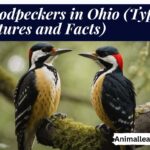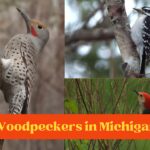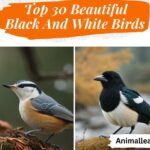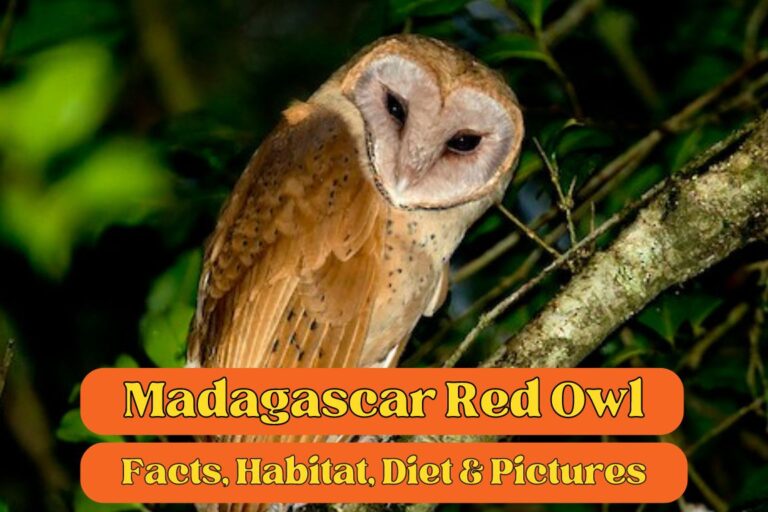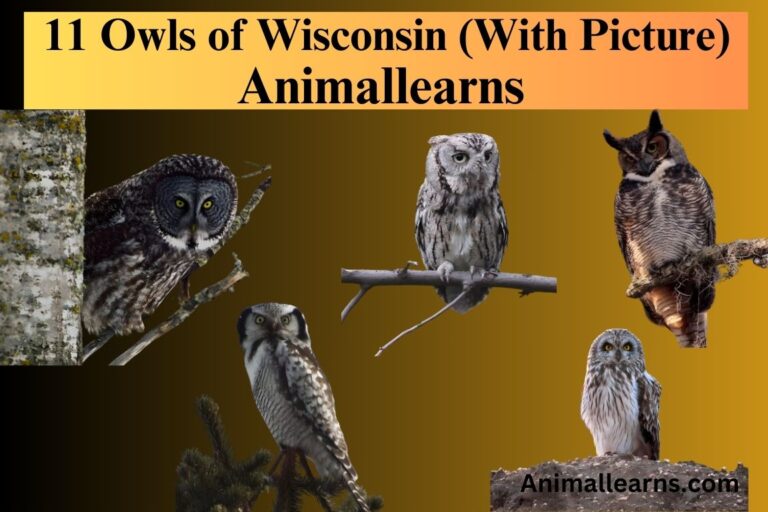9 Beautiful Woodpeckers In Florida – Animallearns
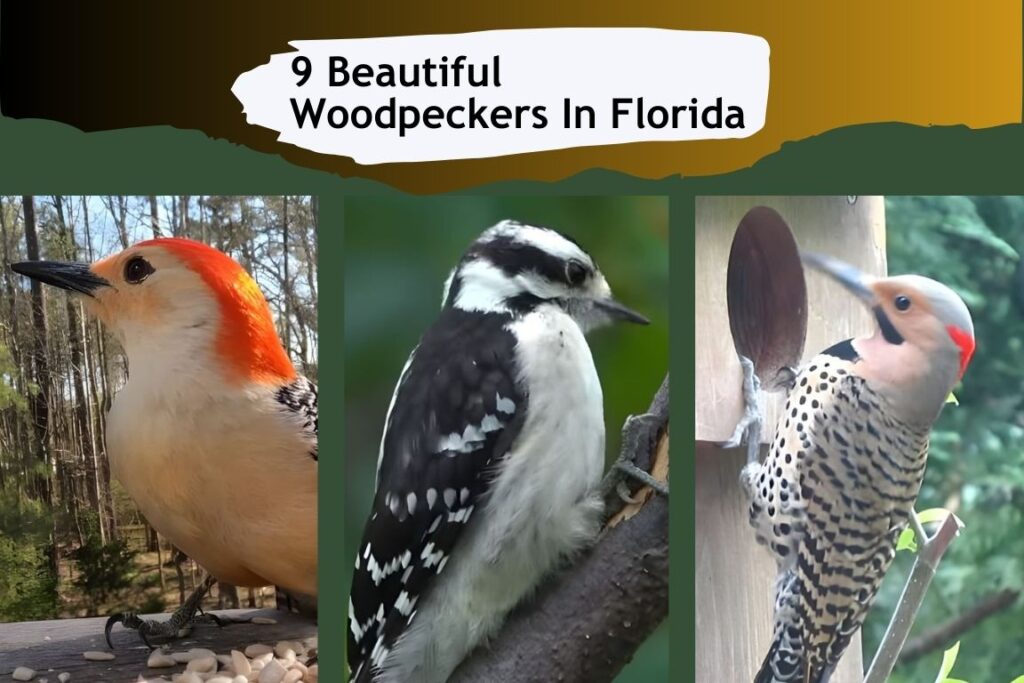
There are several different types of woodpeckers in Florida, each with striking colors and distinctive patterns. For instance, several bird species that either live only in Florida or migrate here to avoid the severe winters elsewhere in the US, find great habitat in the state’s varied and primarily tropical environment.
The 9 common woodpecker species found in Florida are an intriguing feature of the state’s birdlife. The state is a great place for woodpeckers to live year-round due to its warm temperature, which is marked by lengthy summers and moderate winters.
These birds, which range in size from the tiny Downy Woodpecker to the magnificent Pileated Woodpecker, may be found in a variety of environments, such as woods, woodlands, and suburban backyards.
While some, like the Yellow-bellied Sapsucker and the secretive Red-Cockaded Woodpecker, may only be seen during certain seasons, others, including the Hairy Woodpecker, Northern Flicker, Red-bellied Woodpecker, and Red-headed Woodpecker, are permanent inhabitants.
Whether you live in Florida or are just visiting, this extensive book offers insights into several woodpecker species, their habitats, and the optimal times to see them.
It is enhanced with eye-catching photos that highlight each distinct species. Discover the amazing world of woodpeckers and the surprisingly wide range of interesting birds that live in Florida.
Rare Woodpeckers in Florida List
Contents
- Red-Headed Woodpecker
- Red-Cockaded Woodpecker
- Golden-Fronted Woodpecker
- Northern Flicker
- Yellow-Bellied Sapsucker
- Downy Woodpecker
- Pileated Woodpecker
- Hairy Woodpecker
- Red-Bellied Woodpecker
Red-Headed Woodpecker
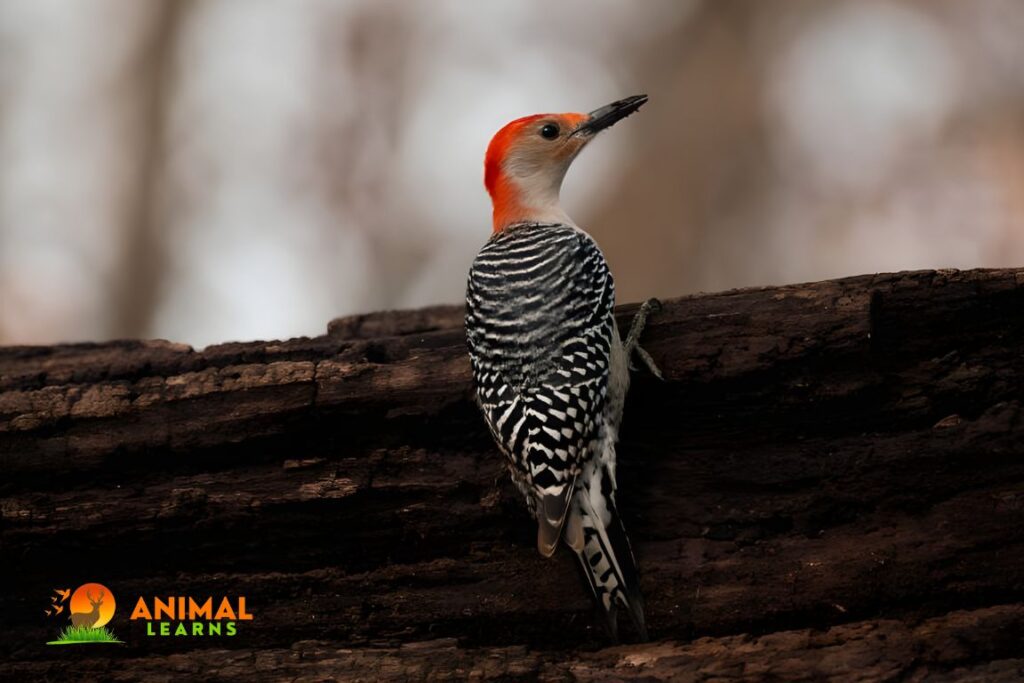
- Scientific name: Melanerpes erythrocephalus
- Length: 21-25 cm (8.3-9.8 in)
- Weight: 70 g (2.5 oz)
- Wingspan: 33-37 cm (13-14.6 in)
- Lifespan: Up to 12 years (wild), up to 20 years (captive)
Florida is part of the Red-headed Woodpecker’s “breeding and wintering” range. The greatest time to observe one in Florida is in the winter when they move to the central-northern regions of the United States and southern Canada to breed.
They live in woodlands, particularly under dead or decaying trees and in marshy regions, and are easily identified by their fiery-red heads. Red-headed woodpeckers sometimes visit backyard feeders; the best feeders are the ones with suet.
In addition, they consume a variety of fruits (such as apples, pears, cherries, blackberries, raspberries, strawberries, grapes, mulberries, and fruits associated with poison ivy), seeds, maize, acorns, beechnuts, pecans, and seeds.
Compared to other woodpecker species, they are rather less common to see at feeders and have a diminishing population.
Red-Cockaded Woodpecker
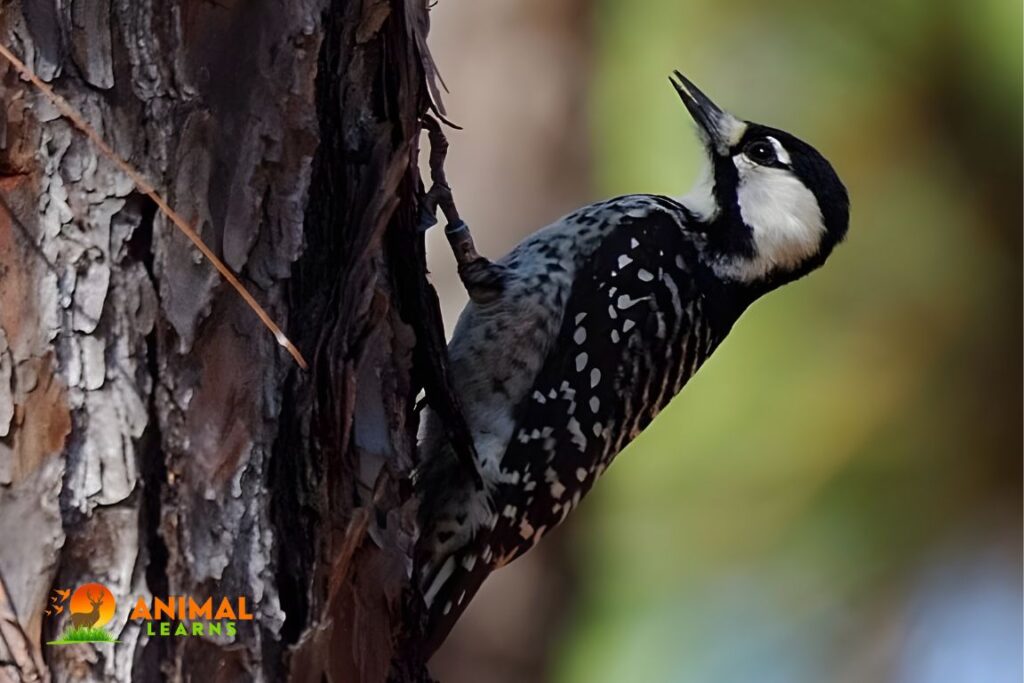
- Scientific Name: Picoides borealis
- Length: 18-21 cm (7.1-8.3 in)
- Weight: 50-56 g (1.8-2.0 oz)
- Wingspan: 34-38 cm (13-15 in)
- Lifespan: 6-10 years
The medium-sized Red-Cockaded Woodpecker may be easily identified by its red crown and black-and-white plumage. The species is mostly found in pine woods and is endemic to Florida.
The Red-Cockaded Woodpecker is regarded as a keystone species because, by eliminating surplus insects that may otherwise damage the trees, it helps to preserve the health of Florida’s pine forests.
Additionally, it is a very gregarious bird that frequently gathers in family groups to dig nesting holes on live pine trees.
Golden-Fronted Woodpecker

- Scientific Name: Melanerpes aurifrons
- Length: 20-23 cm (7.9-9.1 in)
- Weight: 60-75 g (2.1-2.6 oz)
- Wingspan: 36-39 cm (14-15 in)
- Lifespan: Up to 8 years
The medium-sized Golden-fronted Woodpecker has a long, pointed beak. It is larger than a Downy woodpecker and smaller than a Northern Flicker.
The Golden-fronted Woodpecker may be seen all year round in Florida. Seldom do they relocate to other states? The rest of their body is gray-brown, with black tails, white and black wings, and golden nasal tufts and napes. It is called the Golden-fronted Woodpecker because of its golden nape and nasal tufts.
Fruits and insects are the Golden-fronted Woodpecker’s food sources. They forage in certain vegetation, big branches, and the trunks of deciduous trees.
In the late afternoon and early morning, they are at their busiest searching for food. Woodlands with trees like cottonwoods, oaks, and mesquite are their natural habitat.
Northern Flicker
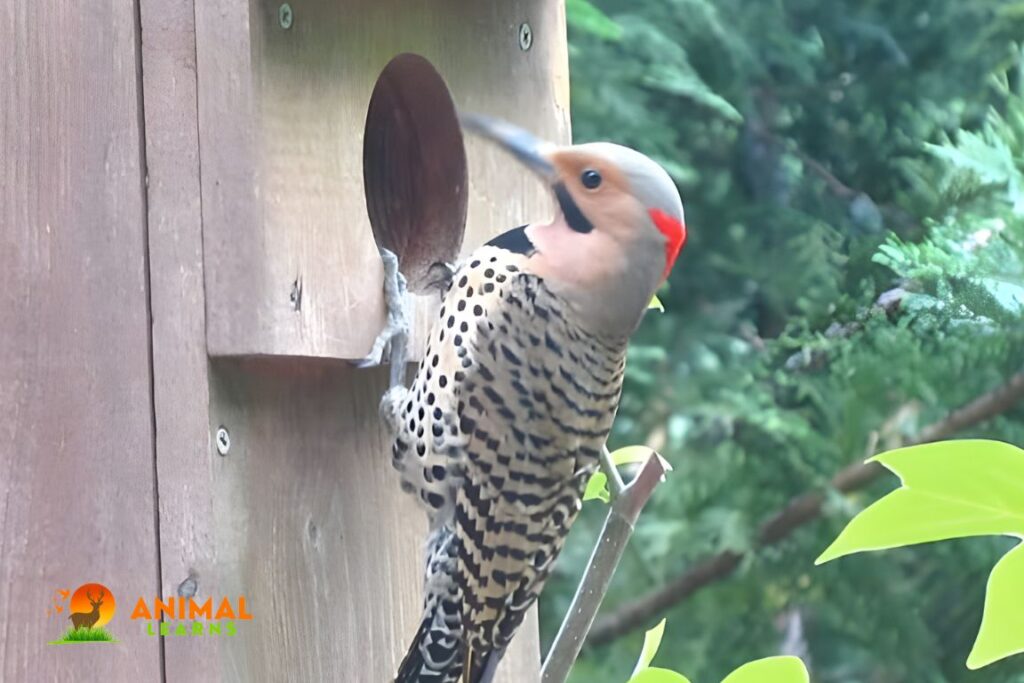
- Scientific Name: Colaptes auratus
- Length: 28-36 cm (11-14 in)
- Weight: 86-167 g (3-5.8 oz)
- Wingspan: 42-54 cm (16.5-21.5 in)
- Lifespan: 4-8 years
Among the biggest woodpeckers are northern flickers. They have a tiny, spherical head, a down-curved bill, and a long, flaring tail. A Hairy Woodpecker and a Northern Flicker are about the same size.
The body color of Northern Flickers is brownish. Their underparts and tail feathers have a vivid golden color. Their plumage has bars, dots, and crescents of black color.
Unlike other woodpeckers, Northern Flickers are ground-based operators. Unlike other woodpeckers, they prefer flat surfaces, such as horizontal branches. Their natural habitats include yards, wooded areas, and parks.
In Florida, Northern Flickers can be found year-round. They are visible in yards. To view one, you won’t have to take a stroll in a forest. Because they hunt on the ground, they stand out.
Yellow-Bellied Sapsucker

- Scientific Name: Sphyrapicus varius
- Length: 7 – 8.4 inches (17.8 – 21.3 cm)
- Weight: 1.2 – 2.2 ounces (34 – 62 g)
- Wingspan: 13.5 – 16 inches (34.3 – 40.6 cm)
- Lifespan: Up to 7 years
Pale-bellied Sapsuckers are small, with robust, straight bills. They have lengthy wings and crown feathers on their heads. Though larger than a Downy Woodpecker, a Yellow-bellied Sapsucker is smaller than a Hairy Woodpecker.
The body of a Yellow-bellied Sapsucker is patterned consistently in black and white. Males may be distinguished from females by their crimson throats.
Their foreheads are crimson. Their folded wings feature a long white stripe that you will notice. Their underparts are golden in color.
Perching erect, yellow-bellied sapsuckers rely on their tails for support. When needed, they will rest on their tail. To make clean, shallow holes in trees, they drill sap wells into the bark.
Acquiring the sap of the tree bark, they also consume insects that have become stuck in the sap wells. When they drum on trees or other things, their pattern of stuttering is distinct.
In Florida, look for Yellow-bellied Sapsuckers in conifer woods. They enjoy making their nests in tiny trees, such as aspens. In winter, they go to open forests.
If you’re lucky, you may spot some in backyards as they forage for bird feeders filled with suet.
Downy Woodpecker

- Scientific Name: Picoides pubescens
- Length: 18-21 cm
- Weight: 25-35 g
- Wingspan: 32-38 cm
- Lifespan: 4-7 years
Smaller than the Hairy Woodpecker, the Downy Woodpecker is similar to it. They feature a blocky head, wide shoulders, a straight back, and a bill that resembles a chisel. Unlike other woodpeckers, their bills are not very long.
From a distance, you can see that the Downy Woodpecker has checked in its black and white pattern. Upon closer inspection, its underside is white, and its head and wings feature striking black and white stripes. A Downy Woodpecker that has a red patch on its head is male.
In Florida, you won’t require a seasonal plan to see Downy Woodpeckers. They are present in all seasons, including summer and winter. They can also be found at bird feeders. Make a stop at one and search for a woodpecker with the aforementioned traits.
This species of woodpecker consumes sunflower seeds, millet, and peanuts. The likelihood of seeing them at bird feeders is increased by their fondness for suet.
Pileated Woodpecker
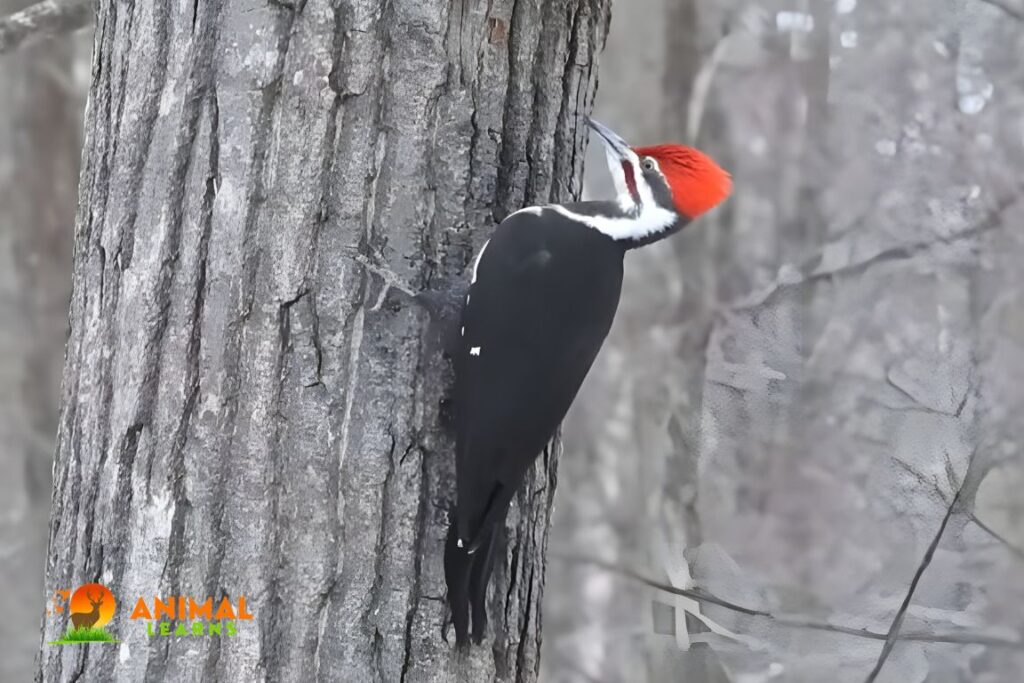
- Scientific Name: Dryocopus pileatus
- Length: 40-47 cm
- Weight: 250-350 g
- Wingspan: 75-85 cm
- Lifespan: 8-12 years
Large and noble-looking, the Pileated Woodpecker is a species of woodpecker common across much of North America. The species is easily identified by its loud, characteristic cries and unique appearance, which consists of a black body, white neck, and white wing stripe.
Most often found in old-growth and mature woods, the Pileated Woodpecker consumes a wide range of insects, such as wood-boring beetles and carpenter ants.
With its stunning look and unique drumming reverberating across the state’s forests, the Pileated Woodpecker is one of the most intriguing species among Woodpeckers in Florida. It is a majestic representation of bird variety.
Because they stay in monogamy for the whole of their lives, pileated woodpeckers are actual life partners. They are very protective of their territory, deterring other birds with their audacious vocalizations and displays.
The amazing excavating skills of the Pileated Woodpeckers are well-known; they carve out big, rectangular holes in rotting trees for their homes.
Hairy Woodpecker
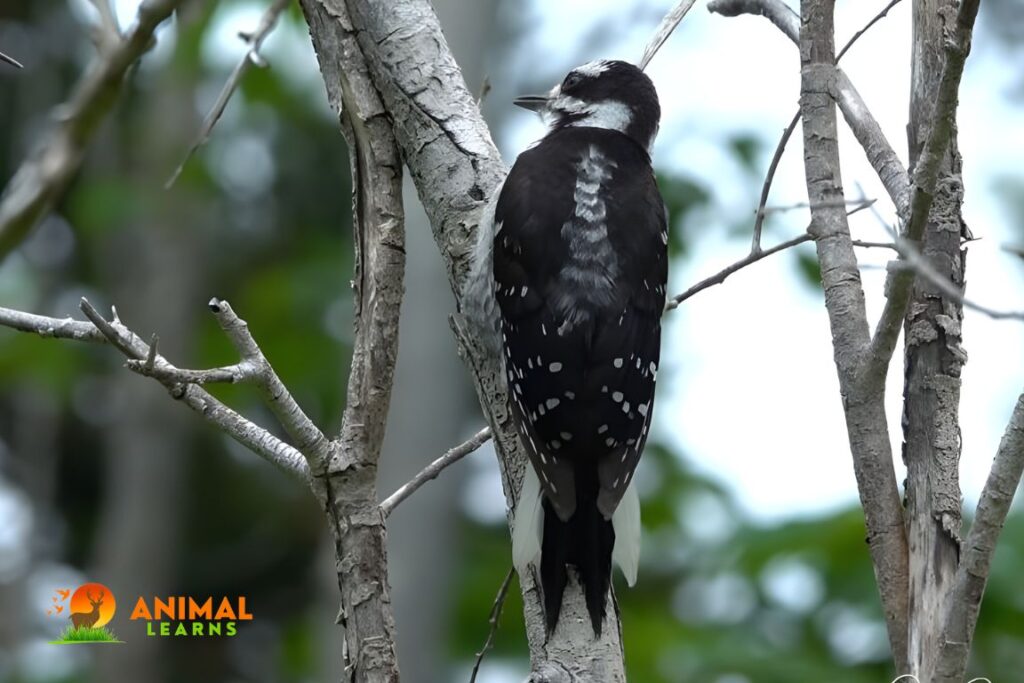
- Scientific Name: Picoides villosus
- Length: 20-23 cm
- Weight: 50-85 g
- Wingspan: 34-43 cm
- Lifespan: 6-12 years
Native to Florida, the Hairy Woodpecker is distinguished by its long, chisel-shaped beak, eye-catching black and white plumage, and distinct personality.
This species is found in many different environments, from the suburbs of Mexico to the woods of Alaska, and it frequently visits bird feeders.
The Hairy Woodpecker is a favorite among homeowners and birdwatchers because of its remarkable drumming on trees and capacity to retrieve insects from deep into tree trunks.
Being a cavity nester, the Hairy Woodpecker builds its nest within a hole in a tree or other wooden structure.
Using their powerful beaks to chip away at the wood until they’ve established the ideal site, both male and female woodpeckers participate in the excavation of the nest.
Soft materials, such as wood chips and, rather surprisingly, synthetic materials like foam, cigarette filters, and bits of clothes, line the nest.
The Hairy Woodpecker mostly eats insects, which it obtains by pecking at tree bark and other wood surfaces. These insects include beetles, ants, and caterpillars.
It is also said to consume fruit, nuts, and seeds from a variety of plants, as well as sip sap from trees and bushes.
Despite being widely distributed across North America, except Florida, the Hairy Woodpecker’s population has decreased in certain regions as a result of habitat deterioration and loss.
The IUCN presently rates the Hairy Woodpecker as “Least Concern,” however conservation efforts are being made to preserve both the species and its habitats.
Red-Bellied Woodpecker
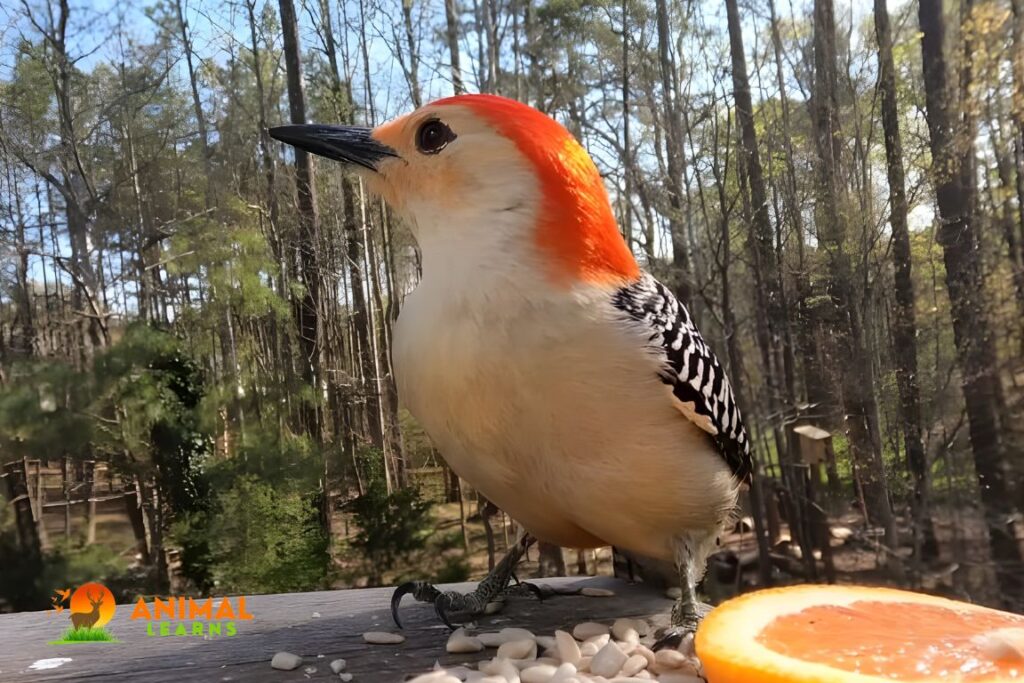
- Scientific Name: Melanerpes carolinus
- Length: 21-23 cm
- Weight: 70-85 g
- Wingspan: 34-39 cm
- Lifespan: 6-11 years
The Red Bellied Woodpecker is Large and visually appealing, the woodpecker is a common bird in Florida, endemic to the state. Its red head, neck, and underparts, together with its black back, wings, and tail, make it quite easy to identify.
The species is further distinguished from its relatives in the state by having a large white patch at the base of its tail and a noticeable white band on its wings.
The Red-bellied It is renowned for having a powerful beak, which it utilizes to search for insects and other food by foraging on the leaves, branches, and trunks of trees.
As a cavity-nesting species, the Red-Bellied Woodpecker constructs its nests inside tree holes. In a dead or rotting tree, the female Red-Bellied Woodpecker fills the hollow with wood chips, while the male excavates the hole.
After that, the two use the hollow to rear their young. Known for its territorial behavior, the Red-Bellied Woodpecker will protect its nest cavity from other birds, other woodpecker species, and predators.
Additionally, the species is frequently observed in parks since it has adapted well to human-modified environments like suburban neighborhoods.
Diet
Woodpeckers are attracted to several meals. There are woodpeckers foraging for food even in the winter. They search all over tree trunks for their favorite things. You must add the following meals in your backyard feeders if you want to draw woodpeckers.
Beefeaters adore suet. Either manufacture your own or purchase suet. Suet will still be consumed by woodpeckers. Saturated animal fat is called suet.
You may use a package of store-bought suet cakes to bait woodpeckers from the feeders. After placing them in the suet feeder in your backyard, wait.
Woodpeckers consume tiny arthropods. Among woodpeckers that inhabit the wild, this is typical. They pursue them on the ground, in tree limbs, and in tree trunks.
Woodpeckers love peanuts and sunflower seeds as well. You must need them for your backyard feeders.
Fun Facts About Woodpeckers

- The tongue of a woodpecker may reach a maximum length of double its head length! This sticky, barbed wonder catches insects that are tucked away deep into trees.
- They produce noises that can reach 110 decibels, which is louder than a jackhammer, by pounding on average 20 times per second!
- A built-in shock absorber in their brains allows them to survive the hammering forces of drumming. What a hardy skull you have!
- Amazingly balanced and agile, woodpeckers cling to vertical objects and perform feats of dexterity akin to feathered acrobats.
- They have amazing vision, seeing goodies buried beneath the bark with a laser-like concentration.
Predators
Woodpeckers in Florida face challenges from predators such as snakes and birds of prey, which may threaten both their nests and their well-being.
The woodpecker’s predators are many. Among them are
- Snakes
- Rats
- Hate raptors such as vultures and eagles.
- Foxes
- Wild cats
Carnivores are a threat to woodpeckers. Most animals find them to be easy prey. They also pose a serious risk to their eggs.
Eggs can be consumed by animals that manage to get to their nests. Woodpeckers use their pecking noises to entice prey. Although it is a feeding adaption, it puts their lives in danger.
Our Best Collection for Wallpapers



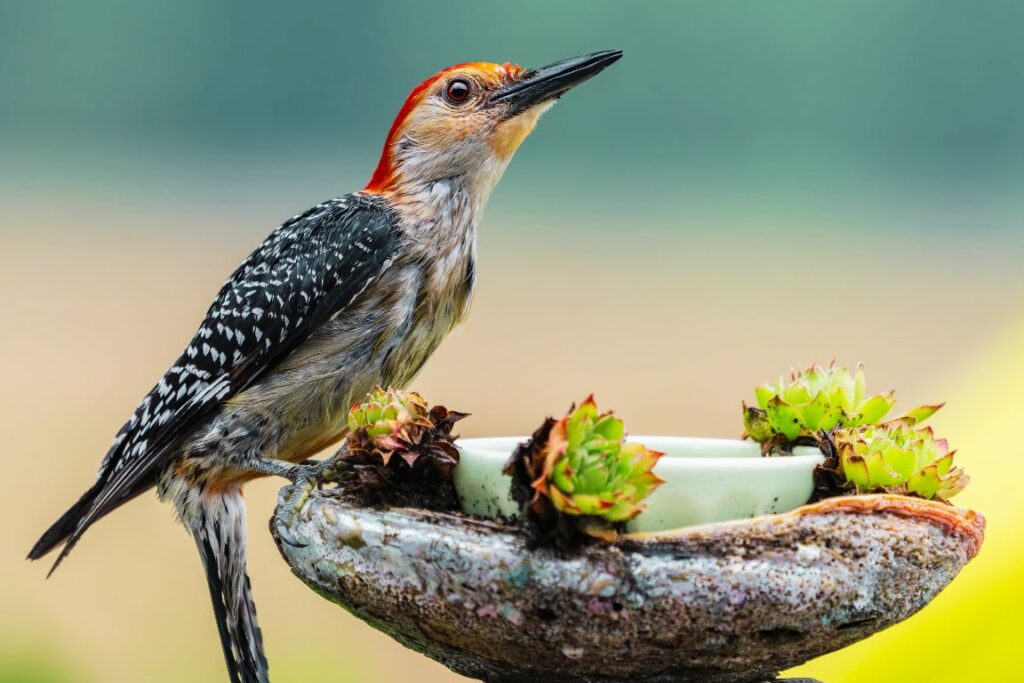

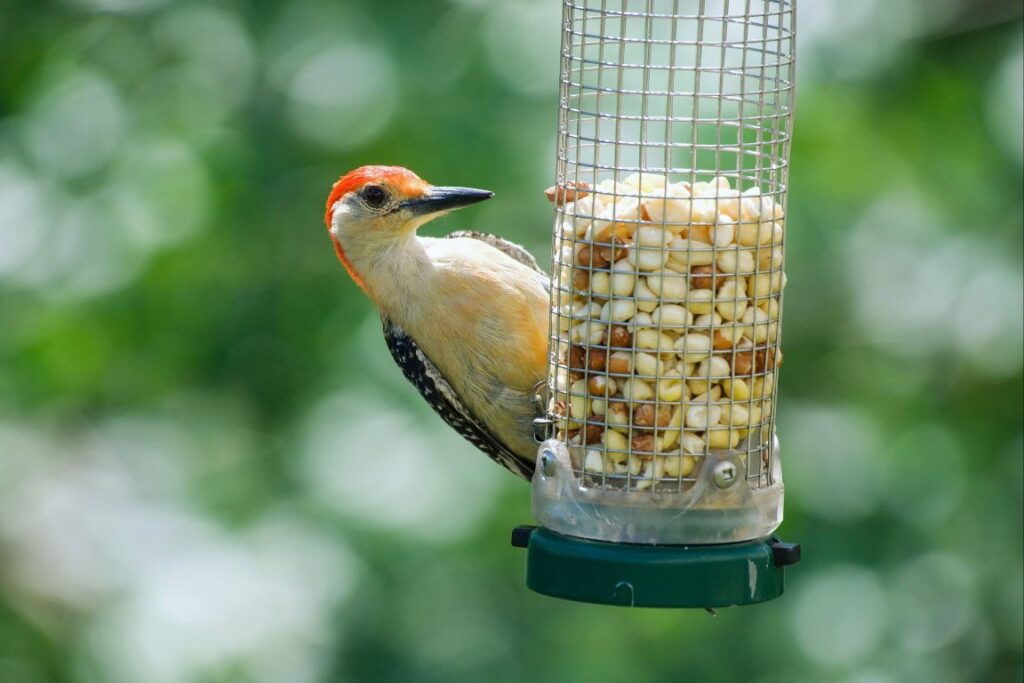
Conclusion
A wide variety of woodpeckers in Florida species, each with its own unique lifestyle, may be found in Florida. The state is also home to excellent locations for woodpeckers and other bird watching, including Wekiwa Springs State Park, Osceola National Forest, and Apalachicola National Forest.
Although most of the disruptions caused by climate change have not affected other bird species, deforestation, and human encroachment on wooded areas have had a significant effect on certain Florida woodpecker populations.
FAQs
What is the most common woodpecker in Florida?
The Red-bellied Woodpecker is without a doubt the most prevalent woodpecker in Florida! These remarkable birds may be found in almost any forested location, from backyards and parks to impenetrable forests, with their brilliant red bellies and powerful drumming sounds. Thus, if you keep a lookout, you should soon see this feathery companion!
What do woodpeckers eat in Florida?
In Florida, woodpeckers eat a variety of foods, but mostly insects and their larvae that are hidden behind tree bark. While some species, like the sapsucker, are specialized on drinking tree sap, others, like the Red-bellied Woodpecker, also appreciate fruits and berries.
Why do woodpeckers peck on trees?
The sound of drumming is caused by woodpeckers digging out insects that are concealed within trees with their beaks. The delicious morsels are then extracted by their lengthy, sticky tongues. In addition to being a means of communication, this drumming is used to designate areas and draw potential partners.
What woodpeckers are protected in Florida?
The Migratory Bird Treaty Act provides protection for all woodpeckers in Florida. But the red-cockaded woodpecker is protected further since it is a federally endangered species.
Where do woodpeckers nest in Florida?
In Florida, woodpeckers nest in a variety of settings, including urban areas, hardwood forests, and pine forests. For their nests, they frequently hollow out trees; certain species choose particular tree varieties over others.



